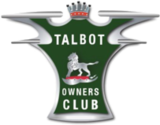BGH 23, The World's Fastest Road Touring Car
.jpg)
This car is the ultimate development of chief engineer, Georges Roesch's vision.Of all the works and works-supported team sports cars that he conceived and developed to perfection, 'BGH 23' is the only one which raced with the much more potent 3.3-litre '110' six-cylinder engine fitted by the factory in period.
'BGH 23' proved itself an amazingly capable all-rounder, competing in a public road rally one weekend, and then winning track races at Brooklands the next. Every event also saw this great car driven home afterwards, again on the public road. What's more, 'BGH 23' was, by 1938, regarded as being, demonstrably, the world's fastest road touring car...
'BGH 23' was the works Talbot most closely associated with the imposing, burly, hard-driving and intensely competitive figure of up-market motor dealer Mike Couper. He was one of the best-known and most respected personalities within'tween-wars British motor racing. He was Sir Henry "Tim" Birkin's business partner, co-financing and running Birkin & Couper Limited at Welwyn, Hertfordshire, just north of London, where the company produced and race-prepared 'Tiger Tim's now immortal series of 'Blower' Bentleys. After 1932 he traded as W.M. Couper in nearby St Albans and became closely involved with Clement Talbot.
.png)
He competed in the 1933 Alpine Trial in his own Talbot AW90 after which he, privateer Hugh Eaton and motoring journalist Tommy Wisdom made a joint approach to Jack Scott, sales director of Clement Talbot, proposing a factory team of three cars for the 1934 event. They suggested that there could be no better reason for tackling the daunting Alpine Trial again "than to prove that the 105 in its fourth year of production was still better than anything else in the world...a fact which the public was tending to forget after two years' absence from competition."
Scott was easily persuaded, appreciating that although the 3-litre Talbot 105 model was not new, still no rival product – including Bentley - could approach its specific power output per litre. The Talbot engine was also more robust than the finest offered by Bentley and Lagonda while the recently adopted pre-selector gearbox was a great advantage in Alpine motoring.
The Talbot accountants would prove a somewhat harder nut to crack. The Sunbeam-Talbot-Darracq group, of which Clement Talbot Ltd was part, was in poor financial health and there was simply no money to compete. Couper and Scott however knew just the people to solve the problem, leading Talbot distributors Pass and Joyce, who enthusiastically agreed to fund the team.
The Talbot commitment to this relatively modest competition venture in fact was to mark the beginning of a period of Talbot racing which lasted almost five seasons "...and which in some ways was to be the most significant period in Talbot racing history". Furthermore, as Anthony Blight explained in his magnificent tome 'Georges Roesch and the Invincible Talbot,' "It was a period dominated almost entirely by Mike Couper and his Alpine team leader 'BGH 23'...".
Three new Alpine Trial team Talbots were produced. Registered 'BGH 21', '22 and '23. 'BGH 21' was allocated to the Wisdoms (Tommy and his wife Elsie), 'BGH 22' to Hugh Eaton, and 'BGH 23' to Mike Couper.
(2).jpg)
Originally 'erected' - according to Talbot factory records - on March 13,1934, what would become 'BGH 23's chassis (serial '38706') was delivered to the coachbuilder on July 16, 1934 – its International Alpine Trial regulation-matching body being recorded as 'Darracq Alpine Racer No 2205'.
The 6th International Alpen Trial was organised by the German Automobile Club, attracting no fewer than 155 entries, including new models from BMW and Delahaye. Mike Couper's new team had to join battle with the Germans on their home ground, and a very long way from home.
On Wednesday, August 1, 1934, Couper in 'BGH23' led the three-car Talbot team off to battle. Through desperately stormy, rain-swept weather conditions, the new team Talbots battled their way to Nice by Friday. Sunday saw scrutineering on the Promenade, then parc fermé to await the Tuesday start, when from 4.00am cars set off at one minute intervals.
Georges Roesch himself awaited the team's arrival in Aix-les-Bains after their first day's 306-mile grind. Next day comprised 263 miles to Interlaken over the Little and Great St Bernard Passes.
Many major passes punctuated the Trial's third day, including the Grimsel, Furka, Oberalp, Lukmanier, Splugen and Maloja before the night stop at St Moritz.The Talbots attacked the mighty Stelvio Pass in the order Wisdom, Eaton and finally Couper in 'BGH 23'. While Wisdom managed a clear run, both Eaton and Couper were delayed by a stalled official car, Mike Couper reckoned he had lost well over a minute yet still completed the climb in 23mins 23secs, Eaton 22:22.2 and Wisdom 22:16.8. These Talbots were by far the fastest in the entire Trial, and Wisdom's had set a new record for the Stelvio.
.png)
After the Italian Colle d'Aprica, Passo del Tonale and the Mendola, the Talbots checked-in at Bolzano, after which the Rolle and Costalunga Passes preceded an uninhibited charge into Padua, then 4,000rpm and 80mph-plus for 10 kilometres through the Autostrada speed test and across the lagoon into Venice.
Next day the Talbots tore through Trieste to Fiume, holding "...an easy 70... arriving in the mid-morning check with ample time for a final fill of Italian petrol and a three-course lunch; they had averaged over 50mph from Venice..." (Blight). A dusty pot-holed time-wasting section followed through Yugoslavia to end in Zagreb before Day 6 took the entry some 550 miles back to the finish in Munich.
The Talbot and Adler teams were finally judged equal winners of Group II, both teams winning coveted Alpine Cups. The Talbot marque's record of seven official entries in three separate Alpine Trials with not a single mark lost by any car, and the highest possible award won in each event is quite remarkable.
All three of Couper's team Talbot 105s finished in excellent condition. Tommy Wisdom would report that after the total 3,600-miles covered – "Oil consumption had averaged 1,700 miles to the gallon and petrol 18mpg. Not a sparking plug had been changed, nor a tappet adjusted. Brakes were still 100 per cent efficient – they had been adjusted once. No car in the world could have given less trouble or performed better...".
Mike Couper subsequently asked Talbot's permission to run 'BGH 23' in the MCC Brooklands Meeting on September 8, 1934. In the First One-Hour High-Speed Trial with obligatory passenger and full touring equipment he covered 85.06 miles to win. The BARC Meeting on October 13 then saw him run 'BGH 23' again, lapping at 107.10mph, just beating Dobbs's very fast single-seat Riley.
This exceptionally important car was then retained into 1935 when Mike Couper raced it again at the Brooklands Easter Meeting, the car sporting a streamlined radiator cowling, 9:1 compression ratio for 126bhp and a 3.8:1 back-axle ratio. Couper lapped the banked Outer Circuit at 110mph during practice, but in the race a valve failed to seat properly.
.jpg)
He retook the wheel on September 14, 1935, for the MCC Brooklands Meeting. In One-Hour High-Speed Trial he set a fastest lap of 103mph and covered 99.61 miles – agonisingly missing out on becoming the first 100mph sports car round the old Motor Course. However, 'The Times' reporter pointed out that he was already 1,200 yards into his next lap when the finishing maroon detonated after exactly one hour, so his true distance covered and therefore average speed from start to finish of the time period was really 100.2mph...
Georges Roesch had meanwhile encouraged the Birmingham ironfounders who supplied Talbot block castings to achieve greater precision and control in their processes. This succeeded in producing a Talbot 105 cylinder block in which the bores could be taken right out to 80mm instead of the previous limit of 75mm, without losing the water-passages between all cylinders. This engine - the '110' – dramatically increased power.
Barlby Road then modified 'BGH 23' for 1936, rewiring it with a separate starter and single battery, the conversion trimming 112lbs. More significantly a new 3.3-litre 145bhp engine (No '110BG34'), still retained today, was fitted. Top speed in touring trim had risen to 115mph, while 0-60mph acceleration time was under 12 seconds.
(1).jpg)
The Brooklands Easter meeting saw Mike Couper lap at 119.43mph to win one race by 26 seconds. June then saw a JCC Members' Day highlighted by a 50-mile race on a road-type circuit. 'BGH 23' ran with a 3.8 axle, full equipment and a compulsory passenger, and averaged 79.8mph, after lapping at 87. In the same trim the car lapped the Outer Circuit at 106-108mph.
For the Brooklands August Bank Holiday Meeting, 'BGH 23' then ran a 3.3:1 back-axle ratio, and wore a revised radiator cowl and improved underbody streamlining. Couper finished third in one race after lapping at 119.72mph, then 120.59mph in a second outing. This four-seat Talbot AV 105 was by this time faster than the old Fox & Nicholl single-seater, while possessing only seven more brake horsepower.
Into its fourth year of active service as a works car, 'BGH 23' was fitted with a new crankshaft, complete with immensely strong new connecting rods and Vandervell big-end bearing shells. Where the standard Talbot crankshaft weighed 78lbs, the new design scaled 68. Compression was raised to 10.0:1 and on alcohol fuel this revised unit hit 6,000rpm safely.
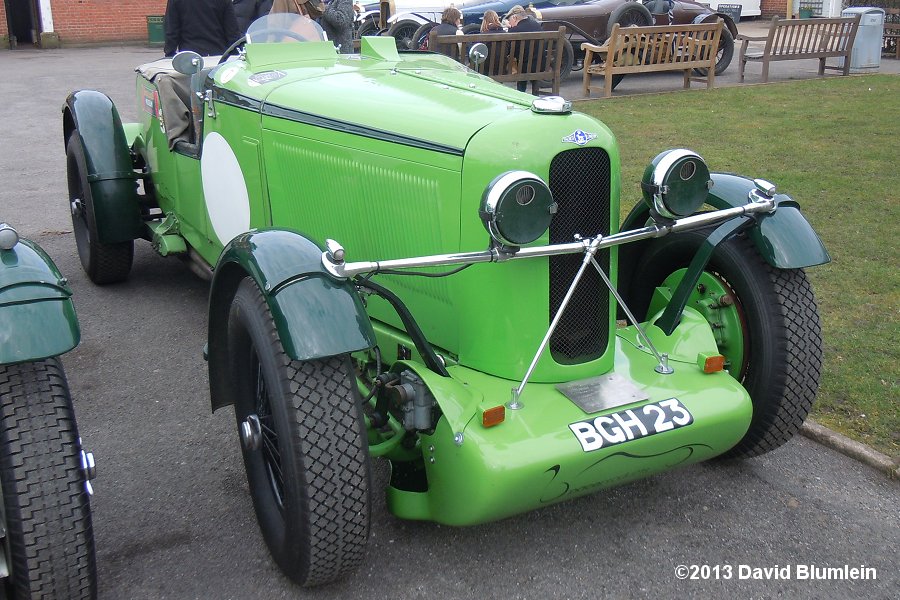
At the beginning of 1937 the cars capable of lapping Brooklands at over 120mph comprised a very small and specialised group, many of them Grand Prix designs. 'BGH 23' was by this time a truly star Outer Circuit car, yet this was no sleek single-seater. To fulfill its 'day job' as a works demonstrator it had to be instantly convertible to catalogue-specification road trim, and to be recognizable to customers. Such constraints actually preserved 'BGH 23' as a truly original Talbot AV 105 with 3.3-litre '110' engine. With weight discreetly trimmed to 22cwt, and improved under-shielding, Mike Couper managed the first 100mph standing-start lap of the car's Brooklands career, and at the Whitsun Meeting he covered a standing-start lap at 101.43mph, and its first flying lap at 121.8mph. Later that day 'BGH 23' ripped far above 130mph flat-out to clock a 123.58mph lap and beat the best-ever four-seat Bentley record.
Back at Brooklands for the JCC Meeting too-hard plugs kept oiling up – a rare lapse. A tangle with Parnell's MG at a Campbell Circuit Brooklands event then saw 'BGH 23' strike a bridge parapet, unshipping the front axle on one side. Couper and Leslie Seyd then shared the repaired car in the RAC Rally. Carefully re-prepared for October's Brooklands event, 'BGH 23' achieved the fastest standing-start lap of its career – 104.41mph – and its best-ever second lap at 121.18mph.
A final season of Brooklands racing in 1938 saw 'BGH 23' achieve a standing-start lap at 103.33mph and 122.67 for its last flying lap in one race, which Couper won. A great deal of work was then invested in the old car in preparation for the premier Dunlop Jubilee Brooklands Meeting. A new raked front cowl appeared, the engine's porting had been much improved, and with 10.5:1 compression Mike Couper lapped at 124.51mph and won by 0.4 of a second, averaging 119.86mph and demolishing Delage and Delahaye opposition. A second race saw him lap at 124.57mph.
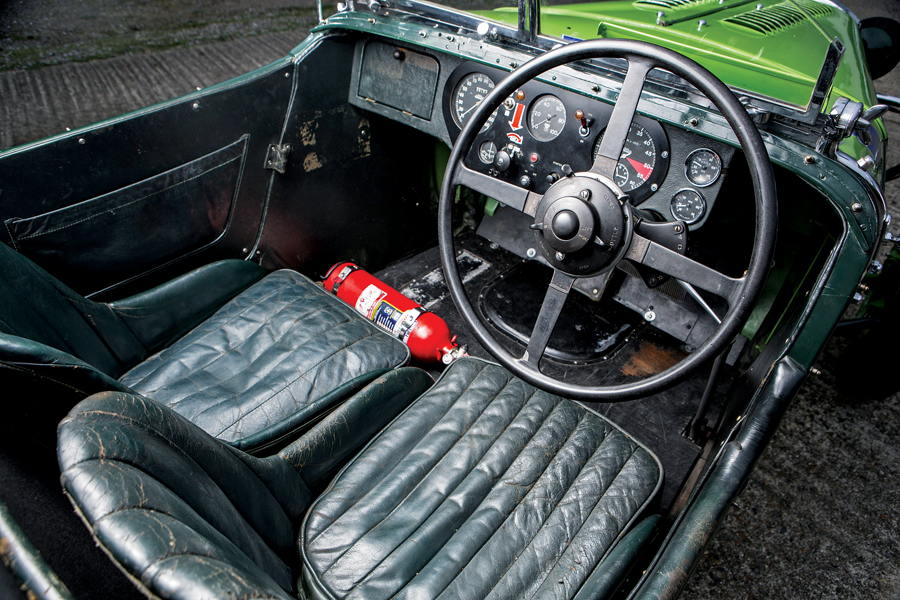
One last Brooklands hurrah remained as the October Meeting of 1938 then saw Georges Roesch – in the twilight of his Talbot career – fit even higher-crown pistons to 'BGH 23's engine, raising its compression to 11.4:1. Mike Couper found he could use 5,000rpm - this great car hit 137mph on the Railway Straight and returned a fastest lap of no less than 129.70mph- comfortably beating the previous 4-seater car Brooklands record held by Couper's old friend and former business partner 'Tim' Birkin's 8C Alfa Romeo. That evening Mike Couper drove 'BGH 23' away from the Track for the last time. Soon after, he bought the old faithful machine from its ailing manufacturer.
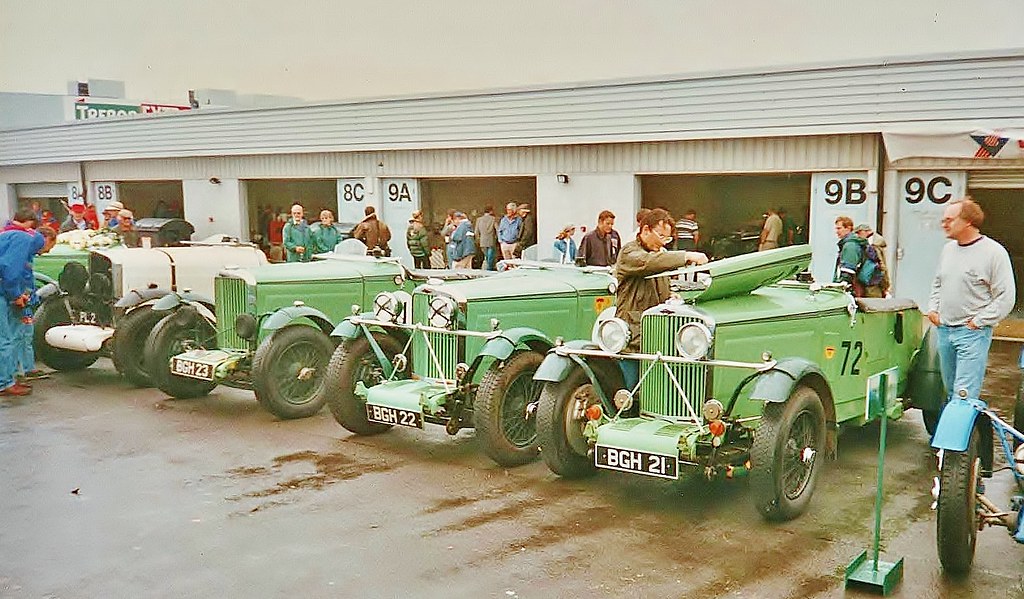
The car then passed during World War II to H.J. Ripley who had it converted by Ian Metcalfe – of Barnato-Hassan Special 'Whale' body fame -into an ugly two-seater, re-registered 'FBL 692'. Future VSCC president and competition car connoisseur, the late Bruce Spollon owned and campaigned the ageing car before in June 1961 it was acquired by Charles Mortimer of pre-war Brooklands racing fame from a Dennis H. Tatler. And Anthony Blight added the car to his legendary Talbot stable soon after. Photographs of the car as acquired by Blight and correspondence on file between John Bland and Blight show that at this point, aside from the later body, the car was still correct and original in all major respects, even retaining its original wings and associated brackets. He had the leading marque specialist of the period, John Bland of London, rebuild 'BGH 23's mechanicals while a new replica body was made. Anthony Blight competed successfully with the car in historic races and rallies from 1963.
.jpg)
When re-bodied by Metcalfe for Ripley, 'BGH 23's original body - little modified – had been mounted upon a 4½-litre Bentley which was raced by Peter Scott-Russell. In 1966 Tony Mitchell bought that car and sold the original Talbot body to Blight, who had it re-fitted to 'BGH23' in 1974 by Talbot specialist Ian Polson. Therefore, as offered here, even 'BGH 23's body is clearly original in all major respects, save for the fuel tank and bulkhead from another Talbot which had to be supplied at the time of Bland's rebuild.
Anthony Blight's successes in the car included winning the Pomeroy Trophy in 1966, 1967, 1969 and 1974, Le Mans Cinquantenaire pre-War race, 2nd, European Historic Car Championship pre-War Class 1st and scores of other successes in races and rallies right up until his untimely death in 1990.
In 2003 'BGH 23'was acquired by well-known collector, who immediately added to this magnificent car's long list of laurels with fourth place in the 2003 Liege-Rome Rally. Subsequently the car was rebuilt by marque specialists Pace Products (who have maintained it since) in preparation for the 2005 Historic racing season and with Gareth Burnett as driver it won at Oulton Park, the Nurburgring, Silverstone and Spa, and added further historic laurels to its already fabulous sporting history.
BGH23 is eligible for all of the great historic rallies and major-circuit events, such as the Mille Miglia Retrospective, the Le Mans Classic, the Endurance Rally Association's Alpine Tour and Flying Scotsman, and of course the Goodwood Revival Meeting - in all of which Talbots in recent years, as in period, have proved extremely capable and competitive.
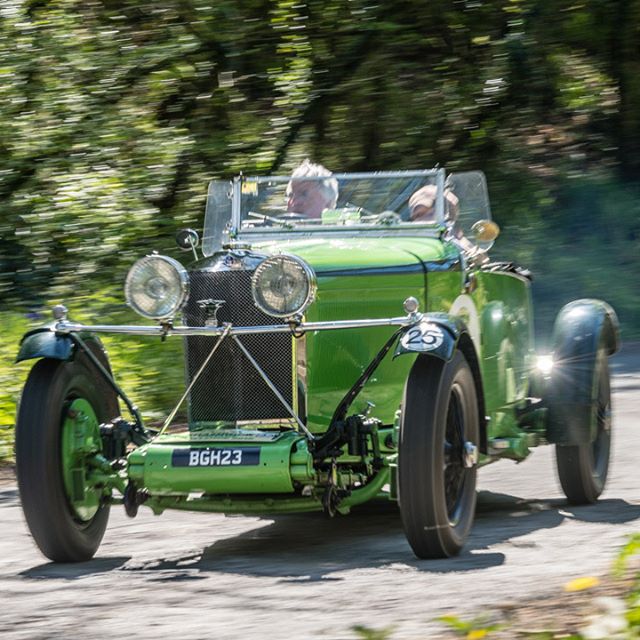
THE TALBOT OWNERS CLUB MAGAZINE
The Talbot Owners Club magazine is published bi-monthly and contains news, updates and informative articles. It is edited by club secretary David Roxburgh.
GO TO DOWNLOADS
TALBOT OWNERS CLUB MEMBERSHIP
The essence of the Club is to ensure that members meet and enjoy themselves; the Club is open and democratic, dialogie is encouraged. It is for people of all ages who like Talbot cars and want to enjoy the company of like-minded people and also to support current Talbot involvement in historic competition.
